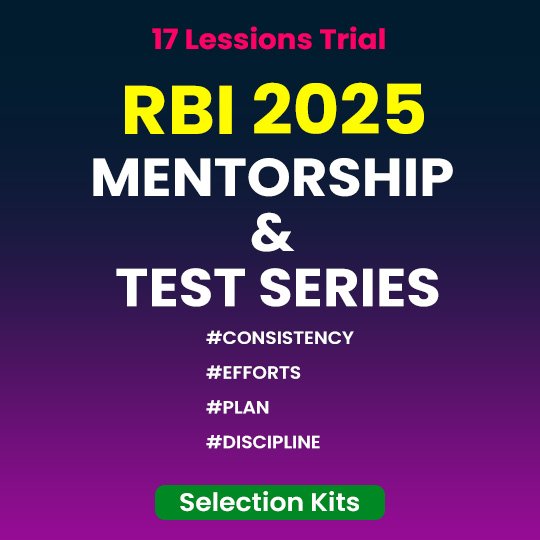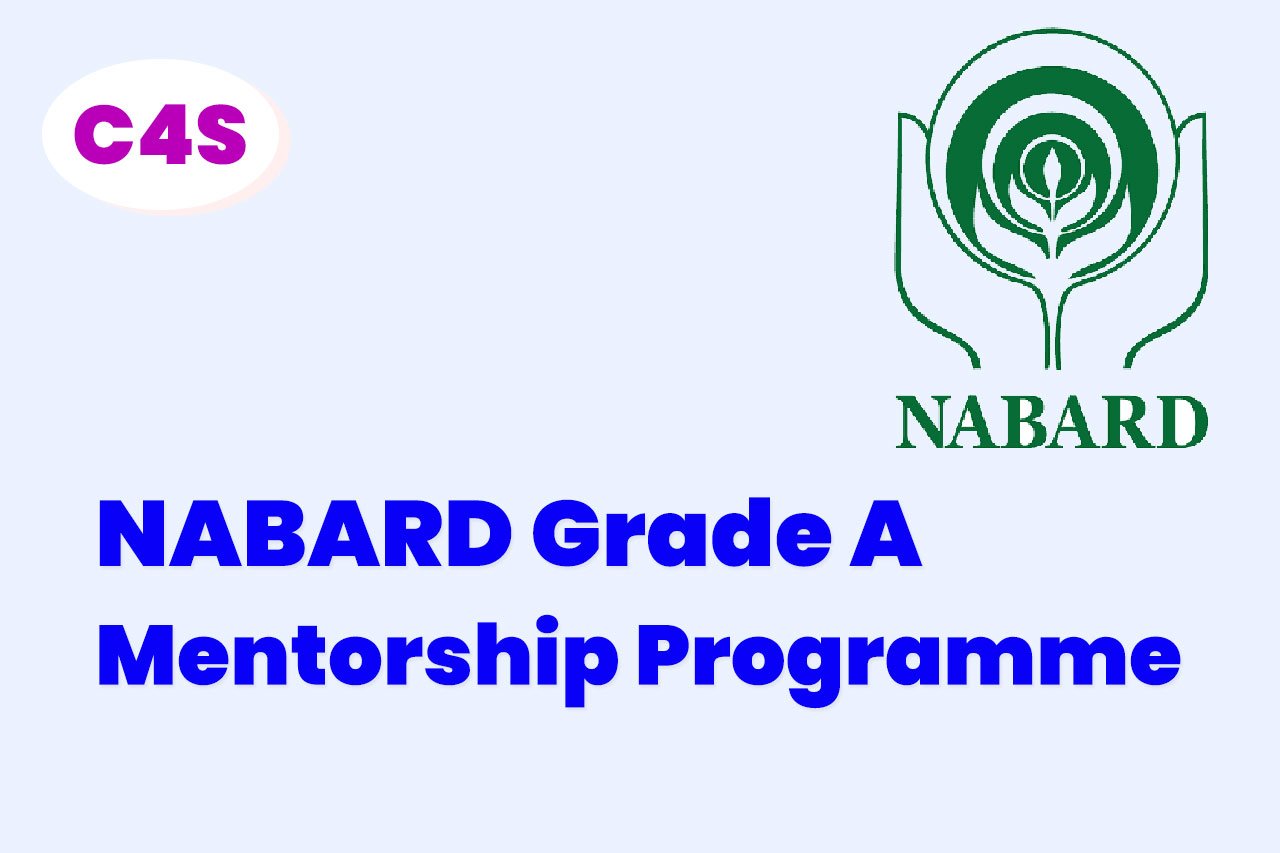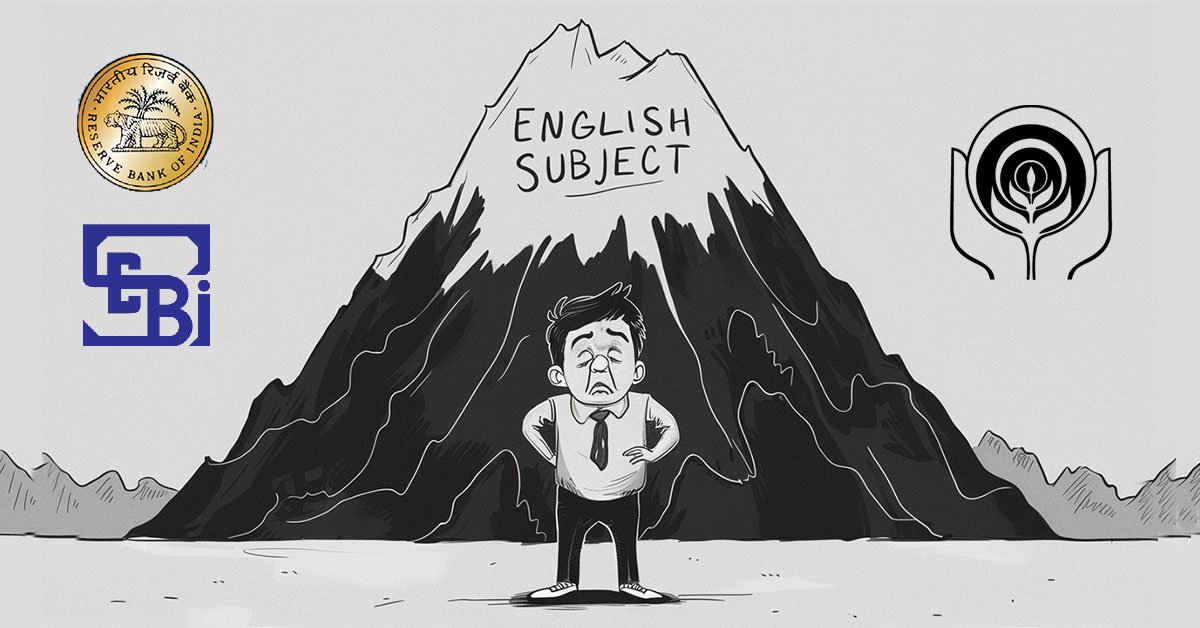Daily Current Affairs Quiz
9 & 10 November, 2025
National Affairs
1. India to Join Tropical Forest Forever Facility Ahead of COP30
Source: TH
Context:
Ahead of COP30 in Belém, Brazil, India announced that it will join the Tropical Forest Forever Facility (TFFF) as an observer. The TFFF is a global initiative designed to mobilise finance to protect tropical forests and curb carbon emissions.
Key Highlights:
- TFFF Mechanism: Countries with tropical forests receive annual payments for maintaining forest cover.
- Investment Fund: The Tropical Forest Investment Fund will invest sponsor money in emerging market bonds while avoiding fossil fuels, coal, and sectors linked to deforestation.
- Global Participation: The announcement came at the Leaders’ Summit in Belém, attended by heads of state including Brazil, France, South Africa, the UK, Norway, and the EU.
- India’s Role: As an observer, India will participate in discussions on forest conservation finance and sustainable climate action.
- Climate Commitments: India is expected to announce updated Nationally Determined Contributions (NDCs) outlining plans to reduce fossil fuel emissions by 2035.
About TFFF:
- A global initiative aimed at mobilising finance to protect tropical forests.
- Focuses on curbing carbon emissions and promoting sustainable forest management.
COP30 – United Nations Climate Change Conference
- Full Form: Conference of the Parties (COP) 30th session.
- Location & Dates: Belém, Brazil; ongoing in November 2025.
- Key Themes for 2025:
- Rising global CO₂ levels: Reported 423.9 ppm in 2024, signaling escalating climate risks.
- Energy transition: Push for renewable energy amid counter-trends like new coal plants in China and India.
- Sustainable transport: Growth of electric vehicles (EVs) and challenges due to geopolitical supply constraints.
- Climate finance: Urgent need for funding to enable green technology adoption, especially for developing countries.
2. Interstellar Object 3I/ATLAS
Source: ET
Context:
The mysterious Manhattan-sized interstellar comet 3I/ATLAS has once again surprised scientists as new images appear to have no cometary tail in new images. Photographs taken by the R. Naves Observatory in Spain on Nov.
Discovery and Background:
- Name: 3I/ATLAS, the third known interstellar object passing through our solar system.
- Discovery Date: July 1, 2025
- Discovering System: Asteroid Terrestrial-impact Last Alert System (ATLAS) – a US-based global early warning network with telescopes in the US, Chile, and South Africa.
Recent Observations:
- Shape & Color Changes: The object is changing shapes and emitting varying colors, causing confusion about its nature.
- Tail Missing: Latest images from R. Naves Observatory, Spain (Nov 5, 2025) show no visible cometary tail, contrary to expectations as it nears the Sun.
- Nature and Size: Interstellar object, roughly Manhattan-sized, Its trajectory and behavior are unusual, suggesting it is not a typical solar system comet.
- Comet: A comet is a small celestial body in the solar system made mostly of ice, dust, and rocky material. They are often called “dirty snowballs” because of their composition.
3. PM Inaugurates 150 Years of “Vande Mataram” Celebrations
Source: News on Air
Context:
On 7 November 2025, the Prime Minister of India inaugurated the year-long national celebrations marking 150 years of the National Song “Vande Mataram” in New Delhi.
The celebrations (2025–26) aim to reconnect citizens—especially the youth—with the historical, cultural, and spiritual power of the song.
About 150 Years of Vande Mataram
A national commemorative initiative to honour 150 years of the song “Vande Mataram”.
The programme highlights how the song inspired India’s freedom struggle and represented the idea of a united Motherland.
Origin of Vande Mataram
- Written by: Bankimchandra Chatterji
- Date written: 7 November 1875 (Akshaya Navami)
- First appearance: In the journal Bangadarshan as part of the novel Anandamath.
- The song portrayed India as a divine, strong, and nurturing Mother.
Historical Importance
- First public singing: Rabindranath Tagore at the 1896 Calcutta Congress Session.
- The verses like “Sujalam, Sufalam, Malayaja Sheetalam” praised India’s natural beauty and moral richness.
- The song evolved from a literary piece into a national call for freedom.
Constitutional Status
- In 1950, the Constituent Assembly gave “Vande Mataram” equal honour as the National Anthem of India.
- It stands as a symbol of unity, cultural identity, moral strength, and courage.
About the Vande Mataram Movement (Gulbarga, Karnataka)
A regional freedom movement in Hyderabad-Karnataka (now Kalyana Karnataka) in 1948, inspired by the slogan “Vande Mataram”, to resist the Nizam’s rule.
4. INS Sahyadri Joins Quad’s Malabar Exercise at Guam
Source: PIB
Context:
The Malabar naval exercise involving the Quad countries (India, US, Japan, Australia) begins Nov 10-18, 2025 in the western Pacific near Guam. This is the 29th edition of the Malabar exercise, originally a bilateral India-US exercise in 1992, now expanded to include all Quad members.
Participating Naval Assets:
- India: INS Sahyadri – guided-missile stealth frigate
- US: USS Fitzgerald – Aegis guided-missile destroyer
- Australia: HMAS Ballarat – Anzac-class frigate
- Japan: JS Hyuga – helicopter destroyer
Exercise Phases:
- Harbour Phase (Nov 10-12):
- Operational planning & discussions
- Alignment on communication protocols
- Familiarisation visits between navies
- Sports fixtures
- Sea Phase (Nov 13-17):
- Joint fleet operations drills
- Anti-submarine warfare exercises
- Gunnery serials
- Flying operations
5. First BIMSTEC–India Marine Research Network (BIMReN) Conference Held in Kochi
Source: News on Air
Context:
Kochi hosted the first BIMSTEC–India Marine Research Network (BIMReN) Conference from 4–6 November 2025.
This marks an important step toward regional cooperation in blue economy, marine science, and ocean sustainability among Bay of Bengal countries.
About the BIMSTEC–India Marine Research Network (BIMReN)
What is BIMReN?
A biennial regional platform under the BIMSTEC framework that promotes:
- Joint marine research
- Sustainable fisheries management
- Blue economy development
- Scientific cooperation among India and BIMSTEC members
It connects marine scientists, policymakers, and research institutions across the region.
When Was It Announced?
- First announced: By the Prime Minister of India at the Colombo BIMSTEC Summit, 2022
- Officially launched: In 2024 by the Ministry of External Affairs (MEA)
- First conference: Hosted by India (Kochi) from 4–6 November 2025
Aim of BIMReN
To strengthen marine research cooperation in the Bay of Bengal region by:
- Promoting sustainable use of marine resources
- Supporting blue economy policies
- Improving ocean observation and scientific data
- Enhancing capacity building among BIMSTEC nations
This aligns with India’s:
- Neighbourhood First Policy
- Act East Policy
- Indo-Pacific Vision
- MAHASAGAR (Marine) Strategy
6. Prime Minister Internship Scheme (PMIS)
Source: BS
Context:
The Ministry of Corporate Affairs (MCA) is working to refine the Prime Minister Internship Scheme (PMIS) to enhance its appeal and ensure a successful launch in the current financial year.
Objective: The revision aims to make the scheme more youth-friendly, inclusive, and aligned with industry skill requirements.
What is the PM Internship Scheme?
- The PMIS is an initiative by the Ministry of Corporate Affairs (MCA) launched in the Union Budget 2024-25 to provide youth with industry experience.
- Launch date: 3 October 2024.
- Implementing ministry (nodal ministry): Ministry of Corporate Affairs (Government of India).
- Goal: Provide 1 crore (10 million) internship opportunities over five years with India’s top companies.
- Pilot phase launched in October 2024.
Key Features of the Scheme
- Internship Duration: 12 months, of which at least half must be in a real-work/industry environment.
- Companies Involved: Internship placements in top 500 firms across sectors like manufacturing, banking, travel, etc.
- Monthly Stipend & Grant:
- Monthly stipend: ₹ 5,000 (₹ 4,500 by government + ₹ 500 from company CSR)
- One-time grant: ₹ 6,000 at joining.
- Insurance Cover: Interns are covered under schemes like Pradhan Mantri Jeevan Jyoti Bima Yojana (PMJJBY) and Pradhan Mantri Suraksha Bima Yojana (PMSBY).
- Geographical Reach: Across 700+ districts, with efforts to make the scheme accessible to weaker sections and remote areas.
Eligibility & Application
- Indian citizens, aged 21-24 years.
- Must not be in full-time education or full-time employment (but distance/online learning may be allowed).
- Educational qualifications: minimum 10th pass, 12th pass, or certificate/diploma/degree (ITI, polytechnic, graduation) depending on stream.
- Family income criteria: Often reported as less than ₹ 8 lakh per annum.
Funding & Budget:
- FY25: Allocated ₹2,000 crore in Budget Estimates (BE), revised to ₹380 crore in Revised Estimates (RE).
- FY26: Allocated ₹10,831 crore.
7. Tribunal Reforms Act, 2021
Context:
The Supreme Court expressed strong dissatisfaction after the Union Government repeatedly sought adjournments in the case related to the Tribunal Reforms Act, 2021.
The Court said the matter concerns judicial independence and cannot be delayed any further.
About the Tribunal Reforms Act, 2021
The Tribunals Reforms Act, 2021 (enacted on 13 August 2021) aims to streamline and reorganize India’s tribunal system.
It replaced the Tribunals Reforms Ordinance, 2021 and brought all rules about appointments, tenure, service conditions, and removal of tribunal members into one law.
The Act also abolished several tribunals and shifted their functions to High Courts to reduce overlap and improve efficiency.
Aim of the Act
- To reduce delays by bringing tribunal cases under High Courts.
- To ensure uniform rules for appointments and service conditions.
- To limit excessive executive control and promote judicial accountability.
- To improve administrative efficiency by reducing fragmentation.
8. Khangchendzonga National Park Rated “Good” in IUCN World Heritage Outlook 2025
Context:
The International Union for Conservation of Nature (IUCN) has rated Khangchendzonga National Park (Sikkim) as “Good” in its 2025 global review of natural World Heritage Sites.
It is India’s only site to receive a positive conservation status this year.
About the IUCN Rating
A part of the IUCN World Heritage Outlook 2025, which assesses how well natural World Heritage Sites are conserved.
It checks:
- Biodiversity health
- Management quality
- Threats and climate resilience
About the IUCN Outlook Programme
- Tracks the condition of 252 natural heritage sites worldwide.
- Sites are rated as:
- Good
- Good with Some Concerns
- Significant Concern
- Critical
Khangchendzonga National Park is the only Indian site in 2025 to receive a “Good” rating, reflecting strong conservation and cultural management.
About Khangchendzonga National Park
A UNESCO World Heritage Site (2016) and India’s first “mixed” heritage site, honoured for:
- Its natural beauty, and
- Its cultural and spiritual significance, especially the traditions of the Lepcha community.
Location
- Located in North and West Sikkim.
- Covers 1,784 sq km, almost 40% of Sikkim’s land area.
- Lies along the India–Nepal border.
- Home to 280 glaciers and 70+ glacial lakes.
- Important ones include Zemu Glacier and Tso Lhamo Lake.
Banking/Finance
1. Digital Gold/E-Gold Products
Source: Indian Express
Context:
The Securities and Exchange Board of India (Sebi) has issued a public warning regarding digital gold or e-gold products sold online. The alert comes as gold prices near all-time highs, triggering increased interest in digital gold.
Digital Gold or e-Gold Products
Digital gold (or e-gold)** refers to gold purchased online in electronic form, stored securely by the provider on behalf of the investor. The value of digital gold is directly linked to live market rates of physical gold (usually 24K, 99.9% purity).
Investors can buy or sell even small quantities (as low as ₹1), without needing physical storage.
Who Offers Digital Gold?
Digital gold in India is offered mainly by:
- MMTC-PAMP (Govt–Swiss JV; one of the largest refiners)
- AUGMONT Gold
- SafeGold
These providers partner with payment apps and platforms like:
– PhonePe
– Google Pay
– Paytm
– Amazon Pay
– Tanishq (via its DigiGold)
Note: Digital gold is not regulated by SEBI or RBI. It operates under general consumer protection and KYC norms.
Key Features
- Small-ticket Investment
- Buy gold starting from ₹1 or 0.01 grams, making it accessible for all income groups.
- 24K High Purity
- Backed by 99.9% pure gold stored in vaults.
- Safe Storage
- Gold purchased is stored in insured vaults by the provider.
- Liquidity (Buy/Sell Anytime)
- Investors can sell digital gold instantly at live market prices.
- Option for Physical Delivery
- Investors can convert digital gold to physical gold (coins/bars).
- Delivery charges + GST apply.
- No Demat Required
- Held in the provider’s digital ledger or wallet.
How Digital Gold are Regulated?
- Regulatory Status:
- Digital/e-gold products are not government-permitted securities.
- They do not fall under Sebi’s regulatory purview.
- Investors in such products cannot access investor protection mechanisms under Sebi.
- Comparison with Regulated Gold Products:
- Sebi regulates:
- Exchange-traded commodity derivative contracts on gold
- Gold ETFs offered by mutual funds
- Electronic Gold Receipts (EGRs) traded on stock exchanges
- These can be purchased through Sebi-registered intermediaries and are governed by Sebi’s framework.
- Sebi regulates:
Advantages
- Easy, convenient method to accumulate gold
- No need for personal locker or storage
- High purity and transparent pricing
- Good for systematic gold saving
- Option to convert to physical gold when needed (e.g., jewellery)
Disadvantages / Risks
1. No SEBI or RBI Regulation
Digital gold is outside formal financial regulation, unlike:
– Sovereign Gold Bonds (SGBs)
– Gold ETFs
– Gold Mutual Funds
2. Storage Time Limit
Most platforms allow 5 years of free storage; after that, delivery or transfer is needed.
3. Higher Costs
Premiums, GST (3%), and delivery charges increase the overall cost.
4. Counterparty Risk
Risk lies with provider stability (MMTC-PAMP/SafeGold/Augmont).
Comparison: Digital Gold vs SGB vs Gold ETF
| Feature | Digital Gold | SGB | Gold ETF |
|---|---|---|---|
| Regulation | Unregulated | RBI | SEBI |
| Interest | No | 2.5% per year | No |
| Liquidity | High (instant) | Low (8-year lock-in) | High |
| Physical Delivery | Yes | Yes (cash redemption) | No |
| Minimum Investment | ₹1 | 1 gm | 1 unit |
2. Open Market Operations (OMO)
Context:
The Reserve Bank of India (RBI) has advised state governments to reschedule market borrowings to ease supply pressure in the bond market amid rising yields. This guidance comes ahead of expectations that RBI will announce an Open Market Operations (OMO) calendar in its December 5 policy review.
Open Market Operations (OMO)
Open Market Operations (OMOs) are monetary policy tools used by the Reserve Bank of India (RBI) to regulate liquidity (money supply) in the financial system through buying or selling government securities (G-secs) in the open market.
Why RBI Uses OMOs
- Control Inflation – By reducing excess liquidity.
- Support Growth – By injecting liquidity when markets face a shortage.
- Manage Bond Yields – To ensure stable borrowing costs for the government.
- Maintain Financial Stability – Prevent market volatility and liquidity stress.
How OMOs Work
1. OMO Purchase (Liquidity Injection)
RBI buys government securities from banks.
- Money flows into the banking system
- Liquidity increases
- Interest rates fall
- Useful during economic slowdown or when liquidity is tight
2. OMO Sale (Liquidity Absorption)
RBI sells government securities to banks.
- Money flows out of the banking system
- Liquidity decreases
- Interest rates rise
- Used when inflation is high or liquidity is excessive
Types of OMOs
- Outright OMOs
- Permanent purchase/sale of G-Secs.
- Long-term impact on liquidity.
- OMO Switch/Operation Twist
- RBI buys long-term bonds and sells short-term bonds simultaneously.
- Used to manage the yield curve.
- Special OMOs
- Conducted during extraordinary market stress (e.g., COVID period).
3. CASA Dynamics in Indian Banking!
Source: BS
Context:
- Indian banks are facing an asset-liability tug-of-war.
- Assets: Loans and investments.
- Liabilities: Deposits and capital.
- Current trend: Credit growth has outpaced deposit growth, pressuring banks’ net interest margin (NIM).
What is CASA?
CASA (Current Account Savings Account) deposits refer to low-cost funds that banks mobilize through customers’ current accounts and savings accounts.
- Current Accounts → No interest paid
- Savings Accounts → Low interest (usually 2.5–4%)
- Hence, CASA is the cheapest source of funds for banks.
Why CASA Matters in Banking
- Lower Cost of Funds
- Higher CASA increases the share of cheap deposits, reducing overall Cost of Funds (CoF) and improving profitability.
- Supports Credit Growth
- Low-cost deposits help banks lend more aggressively at competitive rates.
- Enhances Net Interest Margin (NIM)
- Since funding cost is low, the gap between lending and deposit rates (NIM) widens → better earnings.
- Improves Liquidity & Stability
- CASA balances are usually stable and sticky → ensure consistent liquidity.
CASA Ratio
CASA Ratio = (Current + Savings Deposits) ÷ Total Deposits × 100
- High CASA Ratio = Better margins, strong retail franchise
- Low CASA Ratio = Higher dependence on costly term deposits
Drivers Behind CASA Decline:
- Financialisation of Savings:
- Shift from bank deposits to mutual funds and equities.
- Mutual fund assets under management (AUM) rose from 12% to 32% of bank deposits over a decade.
- Popularity of Systematic Investment Plans (SIPs) diverts money from CASA.
- Corporate Behavior:
- Companies park surplus cash in liquid funds for higher returns and low risk.
- Money returns to banks in bulk deposits or commercial papers, increasing deposit cost.
- Interest Rate Environment:
- RBI cut policy rate by 100 bps to 5.5% since February 2025.
- Lending rates fell faster than deposit rates → adverse margin environment.
- Weighted average lending rate (September 2025): 8.50%
- Weighted average term deposit rate: Up 4 bps month-on-month
- Digital Payments & UPI:
- Instant transfers reduce average deposit retention in savings accounts.
- CASA now serves as a transit point, not a parking place.
- Government Fund Management:
- Introduction of Just-In-Time fund management via RBI’s e-Kuber platform reduces government funds parked in low-cost accounts.
- Limits CASA contribution from government deposits (earlier ~10% of CASA).
- Emerging Technologies:
- Central Bank Digital Currency (CBDC) may further reduce CASA as funds could be held directly with RBI.
Implications for Banks:
- Profitability: CASA drop increases deposit costs, squeezing NIM.
- Competition: Banks face pressure from mutual funds, digital platforms, and tech-enabled fund flows.
- Strategic Response:
- Strengthen digital payment systems to retain CASA.
- Target salary accounts and high-value customers for stable deposits.
- Introduce flexible recurring deposits and specialized deposit products.
- Use AI and analytics to track fund movements and prevent CASA migration.
4. Nine Years After Demonetisation
Source: IE
Context:
Since the demonetisation of ₹500 and ₹1,000 notes in November 2016, India has seen a significant rise in currency with the public (CWP), reflecting cash usage in the economy.
Demonetisation Overview
- Date: Announced on 8 November 2016 by PM Narendra Modi.
- Action: ₹500 and ₹1,000 notes ceased to be legal tender from 9 November 2016.
- Objectives:
- Curb black money
- Combat counterfeit currency
- Promote digital payments
- Formalise the economy
Immediate Impact:
- CWP fell from ₹17.97 lakh crore (Nov 2016) to ₹7.8 lakh crore (Jan 2017).
- Economy faced temporary demand slowdown; GDP growth dipped by ~1.5%.
- Small businesses experienced liquidity crises.
Definition
- Currency with Public (CWP): Total currency in circulation minus cash with banks.
- Currency in Circulation (CIC): Physical currency notes and coins issued by RBI used for transactions.
Currency-to-GDP Ratio
- Indicates cash dependency in the economy.
- Trends:
- 2016-17: 8.7%
- Peak 2020-21: 14.5% (COVID cash surge)
- Oct 2025: 11.11%
- Implication: Lower ratio reflects increased digital payments and formal financial system usage, aiding monetary policy transmission and inflation control.
Comparison with Other Economies
| Country | Currency-to-GDP Ratio |
|---|---|
| India | 11.11% |
| Japan | 9–11% |
| Eurozone | 8–10% |
| China | 9.5% |
| Russia | 8.3% |
| USA | 7.96% |
Reason for India’s higher ratio:
- Large informal economy
- Cultural preference for cash
- Gradual adoption of digital payments
Agriculture
1. High-Quality Millet Seeds
Source: BL
Context:
At an international symposium on Shree Anna (Millets) and Women Farmers, held on Mandia Divas (Millets Day), Union Agriculture and Farmers’ Welfare Minister Shivraj Singh Chouhan urged scientists to develop high-quality millet seeds to make millets a more profitable crop for farmers.
High-Quality Millet Seeds and GM/GE Crops in India
- Millet, also called Shree Anna or Mandia, is a nutrient-rich, climate-resilient crop and considered a “superfood.”
- Promoted under Mandia Divas (Millets Day) to enhance cultivation and farmer incomes.
Need to Make Millets More Profitable
- Farmers prefer crops that give better financial returns.
- To increase adoption, millets must become more profitable, with:
- Better seeds
- Lower cultivation cost
- Higher productivity
Odisha’s Model Appreciated
- Odisha increased millet productivity from 6 quintals/hectare to 12 quintals/hectare, above the national average.
- Odisha is the only state procuring millets at MSP, giving farmers assured income.
- Millets are also included in mid-day meals in Odisha—suggested to be expanded nationally.
Support for Women Farmers
- Millets strongly linked to tribal culture and women’s participation.
- Women SHGs and seed centres in Odisha help:
- Conserve traditional seeds
- Promote local millet-based foods
- Transfer indigenous knowledge to the next generation
Organic and Sustainable Farming Link
- Excess use of fertilisers and chemicals harms soil and health.
- Millets support:
- Low-input, climate-friendly farming
- Transition towards organic farming
- Millets are resilient to droughts and support climate adaptation.
GM (Genetically Modified) and GE (Gene-Edited) Crops
- GM Crops: Organisms with foreign genes inserted to confer desired traits like pest resistance, herbicide tolerance, or improved yield.
- GE Crops: Precision gene editing (e.g., CRISPR-Cas9) modifies the plant’s own genes without introducing foreign DNA.
Current Status in India
- GM Crops:
- Cotton (Bt cotton) is widely grown.
- GM mustard approved under regulatory trials.
- GE Crops:
- Currently under research and regulatory review for commercialization.
- Potential for traits like drought tolerance, pest resistance, and nutrient enhancement.
2. FAIFA Condemns Exclusion from WHO COP11 on Tobacco Control
Source: BL
Context:
The Federation of All India Farmer Associations (FAIFA), which represents tobacco and other commercial crop farmers, has criticised the World Health Organisation (WHO) for excluding farmer groups from participating in the 11th Conference of the Parties (COP11) of the Framework Convention on Tobacco Control (FCTC), scheduled for November 17, 2025.
What is FAIFA?
FAIFA (Federation of All India Farmer Associations) is a national, non-profit organisation representing farmers engaged in regulated commercial crops such as:
- Tobacco
- Chilli
- Cotton
- Pepper
- Other remunerative crops
It advocates for farmers’ rights, fair market policies, export support, sustainable farming practices, and livelihood protection. FAIFA is particularly active in major commercial crop-growing states like Andhra Pradesh, Karnataka, and Telangana.
Why FAIFA is Protesting
FAIFA’s request to participate in COP11 was rejected by the FCTC Secretariat on grounds that farmer interests are “not aligned” with FCTC objectives.
FAIFA says this is discriminatory because FCTC Articles 17 and 18 mandate:
- Protecting livelihoods of tobacco farmers
- Supporting economically viable alternative crops
- Considering socio-economic impacts before policy decisions
Tobacco Farming in India
- India ranks among the world’s top producers and exporters of tobacco, alongside Brazil, Zimbabwe, the U.S., and China.
- Livelihood Impact:
Over 36 million people depend on the tobacco value chain, including cultivation, curing, trading, and processing.
Major tobacco-growing states:
- Andhra Pradesh
- Karnataka
- Telangana
Facts To Remember
1. Richa appointed DSP in Bengal
Richa Ghosh is ready to wear a new cap. The World Cup-winning cricketer was appointed Deputy Superintendent of Police (DSP) in the state police by the Bengal government.
2. Buddha Relics Reach Bhutan as India’s ‘Gift’ for Global Peace Prayer Festival
India sent the sacred relics of Lord Buddha to Bhutan as a temporary goodwill gesture during the 16-day Global Peace Prayer Festival (GPPF), coinciding with Prime Minister Narendra Modi’s visit to Thimphu on 11–12 November 2025.
3. President Droupadi Murmu’s Visit to Angola – Key Highlights
President Droupadi Murmu undertook a four-day state visit to Angola, marking the first-ever visit by an Indian President to the country. The visit coincides with:
- 40 years of India–Angola diplomatic ties (1985–2025)
- Angola’s 50th Independence Day (11 November 2025)
4. India’s Unemployment Rate Falls to 5.2% in Q2, Down from 5.4% in Q1
India’s unemployment rate declined to 5.2 per cent in the second quarter of this year, down from 5.4 per cent in the first quarter of this year, for individuals aged 15 years and above.
5. PM Modi to Attend Celebrations for 70th Birth Anniversary of Bhutan’s Fourth King
Prime Minister Narendra Modi will be embarking on a two-day visit to Bhutan beginning tomorrow.
6. Jawaharlal Nehru Stadium in Delhi to Be Redeveloped as Sports City: Sports Ministry
The iconic Jawahar Lal Nehru Stadium in the national capital will be redeveloped as a Sports City.
7. PM Modi Expresses Grief Over Demise of Telangana Poet and Lyricist Ande Sri
Prime Minister Narendra Modi has expressed grief over the demise of Telangana poet and lyricist Ande Sri.
8. Union Minister Pemmasani Chandrasekhar Inaugurates National Conference Watershed Mahotsav in Guntur
Union Minister of State for Communications and Rural Development Dr Pemmasani Chandrasekhar has called upon people to harvest rainwater and strengthen rural livelihoods.
9. Lok Sabha Speaker Om Birla Inaugurates 22nd Annual CPA India Region Zone-III Conference in Kohima
Lok Sabha Speaker Om Birla today inaugurated the 22nd Annual Conference of the Commonwealth Parliamentary Association (CPA), India Region Zone-III, at the Nagaland Legislative Assembly in Kohima.
10. Union Cooperation Minister Amit Shah inaugurates Co-op Kumbh 2025 in New Delhi
Union Home and Cooperation Minister Amit Shah has said that Urban cooperative banks should come forward to empower the aspiring youth and underprivileged sections of society.
11. IAF Organises First Ever Full-Scale Air Show in Guwahati to Mark 93rd Anniversary
The Eastern Air Command of the Indian Air Force organised the first-ever full-scale air show in Guwahati today to mark the 93rd anniversary celebrations.
















